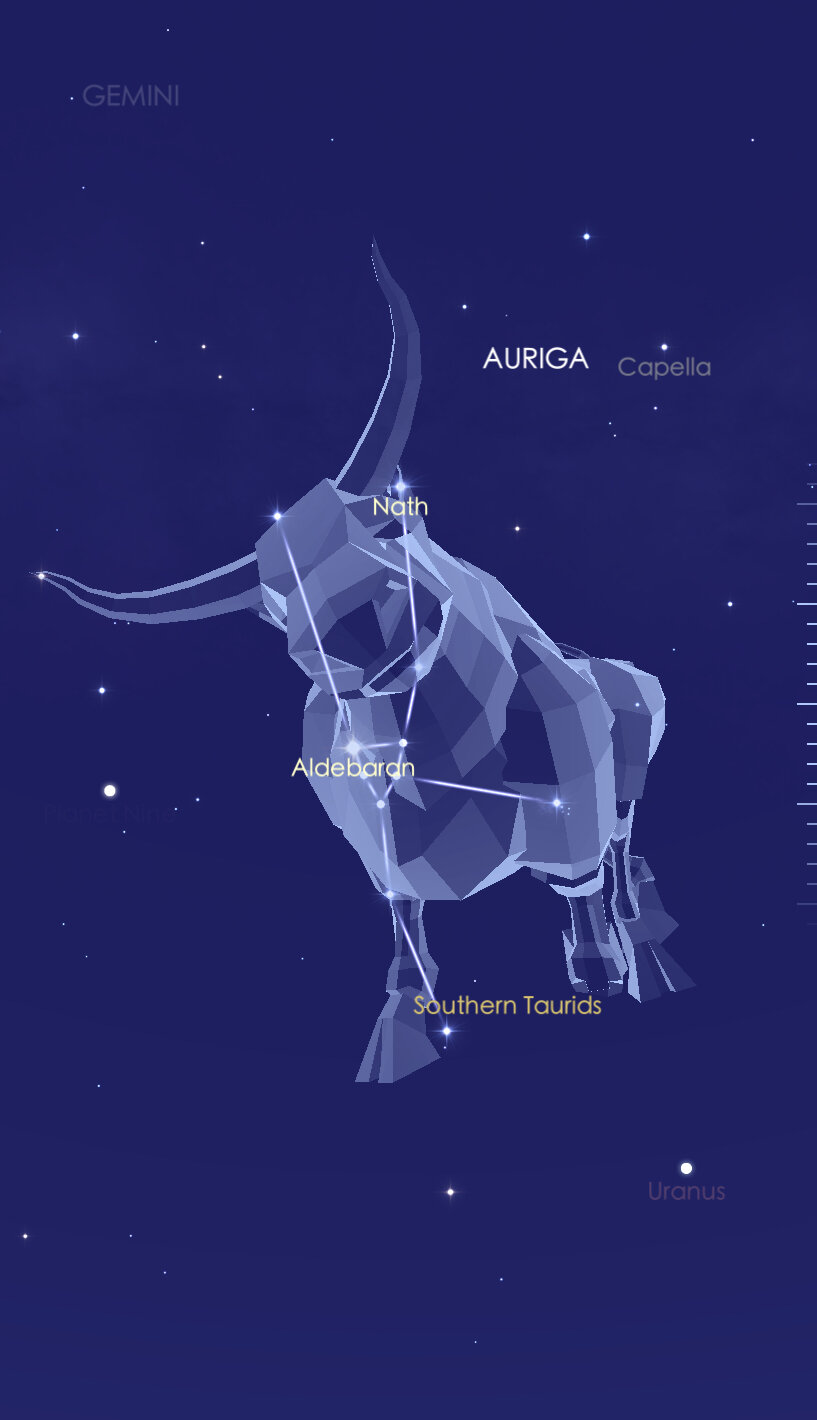Today we will discuss two passages that are well known and difficult to understand. They concern the movement of the stars and the orbit of the Sun around the Earth. Here is the first one:
פסחים צד,ב
תָּנוּ רַבָּנַן, חַכְמֵי יִשְׂרָאֵל אוֹמְרִים: גַּלְגַּל קָבוּעַ, וּמַזָּלוֹת חוֹזְרִין. וְחַכְמֵי אוּמּוֹת הָעוֹלָם אוֹמְרִים: גַּלְגַּל חוֹזֵר, וּמַזָּלוֹת קְבוּעִין. אָמַר רַבִּי: תְּשׁוּבָה לְדִבְרֵיהֶם — מֵעוֹלָם לֹא מָצִינוּ עֲגָלָה בַּדָּרוֹם וְעַקְרָב בַּצָּפוֹן
The Sages taught: The Jewish Sages say the celestial sphere [גלגל] of the zodiac is stationary, and the constellations revolve in their place within the sphere; and the sages of the nations of the world say the entire celestial sphere revolves, and the constellations are stationary within the sphere. Rabbi Yehuda HaNasi said: A refutation of their opinion [that the entire sphere moves] can be derived from the fact that we have never found the constellation of Ursa Major in the South or Scorpio in the North. [This indicates that it is the stars themselves that revolve in place and not the celestial sphere as a whole, because otherwise it would be impossible for Ursa Major to remain in the North and Scorpio to remain in the South].
The meaning of this passage is unclear, and as the late Isidore Twersky pointed out, it “has a long history of interpretation, reflecting various moods: embarrassment, perplexity, satisfaction, with some attempts at harmonization or reinterpretation or restricting the significance of the report.”
What could this passage mean?
Many different interpretations have been offered. One is that the galgal refers to the Sun, and the mazzalot refer to the planets; in this understanding, the sages of the Talmud anticipated the Copernican heliocentric system. However, this explanation must be rejected because in the very next line of the discussion, the Talmud makes it clear that the mazzalot contain the constellations Eglah (Taurus) and Akrav (Scorpio). It is therefore apparent that the mazzalot in this rabbinic passage are not to be identified with any of the planets. It is also clear that the system being described is not the Ptolemaic one in which the stars and planets revolve around the Earth, because the Earth is never referred to as galgal. The most likely explanation of this passage is that the galgal refers to a sphere and that, according to the Gentile sages, the constellations are fixed within a revolving sphere. The Jewish sages believed the sky to be both solid and immovable; according to them, the constellations—which are clearly seen to revolve, do so independently of the fixed heavens beneath them.
“We have never found Ursa Major in the SoutH”
According to Rabbi Yehuda HaNasi, the constellation known as Agalah is always found in the southern sky, and that known as Akrav is always found in the north. These two constellations should be easy to identify. Let’s start with the second one mentioned. The word Akrav עַקְרָב means a scorpion, and Scorpio is one of the twelve signs of the zodiac. Good. But what about the first constellation eglah or agalah (there is a big difference)? To what constellation might this refer? Agalah - עֲגָלָה means either a “wagon” or, when the same letters are vocalized as eglah, a “calf.” And then things really get interesting. So interesting that we did an entire post just on this topic. You can read it here.
Where does the sun go at night?
And now the second passage. Incidentally, it is also the text seen in the header on the landing page of Talmudology. It is from a manuscript of the Talmud held at the Jewish Theological Seminary MS Rab. 1623.
פסחים צד, ב
חכמי ישראל אומרים ביום חמה מהלכת למטה מן הרקיע ובלילה למעלה מן הרקיע וחכמי אומות העולם אומרים ביום חמה מהלכת למטה מן הרקיע ובלילה למטה מן הקרקע א"ר ונראין דבריהן מדברינו שביום מעינות צוננין ובלילה רותחין
The wise men of Israel say that during the day the Sun travels under the rakia, and at night it travels above the rakia. And Gentile wise men say: during the day the Sun travels under the rakia and at night under the Earth. Rabbi [Yehudah Hanasi] said: their view is more logical than ours for during the day springs are cold and at night they are warm.
The Path of the Sun, per the Talmud
In the talmudic view, the sky is completely opaque. As the Sun passes over the top of the sky at night, it is not in the slightest way visible. The rabbis of the Talmud also believed that the Earth was a flat disc, and that above the sky was an opaque covering called the rakia. During the day the Sun was visible under the rakia, and then at night it zipped back from where it set in the west to where it would rise again in the east by traveling over the rakia. Something like this:
From Judah Landa. Torah and Science. Ktav 1991. p63
This orbit of sorts comes up again in another discussion, found in tractate Bava Basra: There is an argument whether at night the sun zips across the top of the opaque rakia, as Rabbi Eliezer believed, or zips behind it, as it were, which is what Rabbi Yehoshua believed.
בבא בתרא כה, א–ב
תניא ר"א אומר עולם לאכסדרה הוא דומה ורוח צפונית אינה מסובבת וכיון שהגיעה חמה אצל קרן מערבית צפונית נכפפת ועולה למעלה מן הרקיע ורבי יהושע אומר עולם לקובה הוא דומה ורוח צפונית מסובבת וכיון שחמה מגעת לקרן מערבית צפונית מקפת וחוזרת אחורי כיפה
Rabbi Eliezer taught: The world is similar to a partially enclosed veranda [אכסדרה], [which is enclosed on three sides] and the northern side of the world is not enclosed with a partition like the other directions. When the sun reaches the northwestern corner it turns around and ascends throughout the night above the rakia [to the east side and does not pass the north side].
Rabbi Yehoshua says: The world is similar to a small tent [קובה], [and the north side is enclosed too,] and when the sun reaches the northwestern corner it orbits and passes behind the dome.
From Judah Landa. Torah and Science. Ktav 1991. p66.
It is hardly news to point out that a long time ago people believed that the universe was different to the way that we understand it to be today. But the belief of the rabbis of the Talmud was standard until only very recently, by which I mean only a few hundred years ago. (And if you want to learn more about that comment “during the day springs are cold and at night they are warm” there is a recent Talmudology post that explains it. You can enjoy it here.)
Copernicus and his critics
When Nicolas Copernicus (d. 1543) proposed his heliocentric universe he did so for a number of mathematical reasons but without any evidence. The experimental evidence that supported his claim did not appear for over three hundred years, when in 1838 the first measurement of stellar parallax occurred. Without evidence to support the Copernican model, many rejected it. For example, the famous Danish astronomer Tycho Brahe (1546–1601) rejected the Copernican model, and came up with one of his own in which all the planets orbited the sun, which in turn dragged them around a stationary earth. For about one hundred years after Copernicus, the universities of Oxford and Cambridge ignored the heliocentric model entirely, and the English philosopher, statesman, and member of Parliament Francis Bacon (1561–1626) rejected the Copernican model as having “too many and great inconveniences.”
Galileo and the Catholic Church
Galileo published his discovery of the four satellites of Jupiter in Sidereus Nuncius in 1610. This discovery did not prove that Copernicus was correct, but it lent a great deal of corroborative evidence to the Copernican model. In addition Galileo noted that Venus seemed to change shape, just as the Moon did, sometimes appearing almost (but never quite) full, sometimes as a semi-circle, and at other times as sickle-shaped. The best explanation was that Venus was not orbiting the earth, but that it was in fact orbiting the Sun. And that turned out to be correct too. But as we know, things didn't turn out too well for Galileo. The Catholic Church, which by now had placed Copernicus' book on its Index of Banned Books, also banned Galileo's Dialogue Concerning the Two Chief World Systems - the book in which he outlined his proofs that the earth orbited the sun. The works of the astronomer Johannes Kepler (d.1630) were also added to the Index.
The Jesuit Edition of Newton's Principa
In 1687 the Copernican model found support with the publication of Newton’s Principa Mathematica. In that work, Newton described the universal laws of gravitation and motion that were behind the observations of Copernicus, Galileo, and Kepler. The book went through three Latin editions in Newton’s life-time, and an English edition was published two years after his death in 1727. A new three-volume edition of the Principia was published in Geneva between 1739 and 1742. This edition contained a commentary on each of the book’s propositions by two Franciscan friars but was noteworthy for another reason. In its final volume, the “Jesuit edition” contained a disclaimer by the friars distancing themselves from the heliocentric assumptions contained in the book:
Newton in this third book assumes the hypothesis of the motion of the Earth. The propositions of the author cannot be explained otherwise than by making the same hypothesis. Hence we have been obliged to put on a character not our own. But we profess obedience to the decrees promulgated by sovereign pontiffs against the motion of the Earth.
So it wasn't just the rabbis of the Talmud who believed the earth stood still. In fact they believed what (nearly) everyone else continued to believe for at least a thousand years. The sun certainly looked like it revolved around the earth, so the rabbis created a model of the universe in which it did so, either by circling under the earth at night, or by zig-zagging back across the top of the rakia. Neither model turned out to be correct. But in believing this, the rabbis were firmly in the majority.
***
[If you want more on this subject, I'm also told there's an excellent book on the Jewish reception of Copernican thought.]










